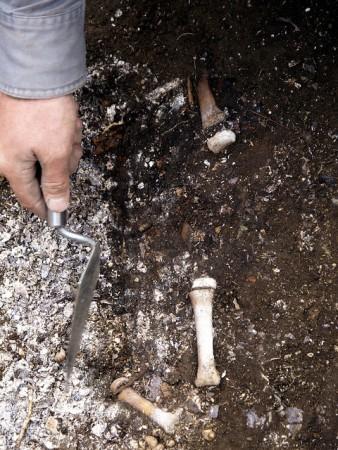
Archaeologists have discovered what appears to be the burial site of an Ice Age infant and a late-term foetus in Alaska's remote interior. The remains were surrounded by some ancient weapons, providing the researchers with an opportunity to get a look at the unique cultural practices of that era.
"Prior to these finds, we really did not have evidence of that facet of settlement and traditional systems for the early Americans who once inhabited this area. These are new windows into these ancient peoples' lifestyle" said Ben Potter, an archaeologist at the University of Alaska in Fairbanks, according to a report on Smithsonian.com.
The skeletons were found in a circular pit. Potter recalls that at time of the discovery, his team could just say that the samples seemed like that of a human, and looked quite small.
The team excavating the site, in a paper published in the Proceedings of the National Academy of Sciences, stated that they had conducted skeletal as well as dental analyses and only then could come to the conclusion that one of the skeletons was that of an infant who died some time after birth and the other was of a late-term foetus.
The burials that were found below the cremated infant's remains date back to around 11,500 years. With this glimpse of Ice Age mortuary practices, the archaeologists are trying to study the culture of the ancient people who resided near the Upward Sun River during that time, according to a Reuters report.
It is being estimated that it was around that time that people had begun to settle in North America.
Historians believe that the Upward Sun River site was inhabited by the Denali people, who dwelled in central Alaska between 12,000 to 6,000 years ago. This was towards the end of the Pleistocene epoch, which is now popularly referred to as the last Ice Age.
In 2010, the team had discovered cremated remains of a three-year-old just 16 inches above the remains of the newly-found pair.
"Two interred infants with associated grave goods and a third cremated child represent the earliest known human remains from the North-American subarctic, and they provide evidence for novel mortuary behaviours at the end of the last Ice Age," the authors wrote.
















